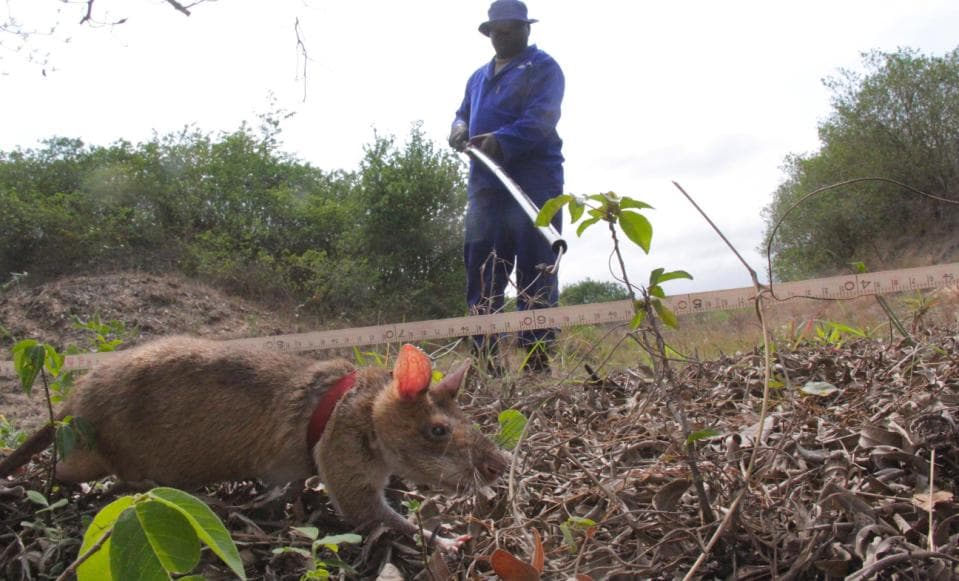
Mozambique To Turn Old Ammunition Depot
Mozambique To Turn Old Ammunition Depot in Malhazine Into Nature Reserve. Craters lie where concrete bunkers once stood, testament to the powerful explosions that occurred when a Mozambican ammunition depot accidentally blew up in 2007, killing more than 100 people.
Now work is underway to transform a site littered with old rockets, grenades and shells into a nature reserve with museums, restaurants and a children’s playground.
Last month, Mozambique said it had removed all known land mines with the help of the United Nations and international demining groups, ending a massive project that began after its civil war ended more than two decades ago. Yet determining teams are still removing ammunition remnants at the former military depot in Malhazine, a densely populated neighborhood on the edge of Maputo, the capital.
Much of it is considered harmless, but some military explosives there have degraded fuzes, making them a particular menace because they are unstable.
The plan to create a weekend getaway for families out of a no-go zone symbolizes Mozambique’s peaceful aspirations after conflict that started in the 1960s with the war against Portuguese colonizers and ended with a 1992 peace deal in Rome between rival Mozambican factions whose divisions still sometimes spill into violence. Mozambique was also haunted by civilian casualties from old land mines long after fighting ceased.Mozambique To Turn Old Ammunition Depot in Malhazine Into Nature Reserve
“We want to see if it can be a place for pleasure, not connected to war,” Alberto Augusto, director of Mozambique’s National Demining Institute, said of the former depot at Malhazine, 3.7 miles (six kilometers) north of the international airport. He compared plans for a park there to New York City’s Central Park, saying Maputo must establish green areas as development accelerates in one of Africa’s fastest-growing economies.
“We need to create an equilibrium between the buildings that we are constructing and the environment,” Augusto said in an interview with The Associated Press.
On a recent morning, teams from APOPO, a non-governmental group whose headquarters are in Tanzania, used metal detectors to locate chunks of old ammunition and other rusted metal. They deployed large rats, attached by leashes to long poles, that had been trained to sniff out TNT. APOPO is testing the unusual program for possible use in Cambodia, where mines from past conflicts still inflict casualties.
The Malhazine clearance project is expected to take at least one more year. The HALO Trust, an international charity that helped clear mines in Mozambique, will join the operation at the 1,480-acre (600-hectare) site, much of which is dense scrub traversed by sandy roads. To avoid scaring Malhazine residents who remember 2007 disaster, deminers don’t destroy explosives in controlled blasts at the former depot but instead remove them to areas far from population centers for disposal.
On March 22 of that year, blasts at the depot, originally built by the colonial army, caused Soviet-made rockets and missiles to come down on nearby homes and businesses. Residents said some ordnance flew as far as central Maputo, at least six miles (10 kilometers) away.
Video showed a large fireball on the horizon and giant plumes of smoke. The rumble of explosions was heard for hours as panicked residents fled their homes. At least 100 people died and about 500 others were wounded; hundreds of homes were destroyed. Authorities later blamed the disaster on unsafe storage conditions and high temperatures.
“It’s something that locals will never forget,” said Lordes Zavale, an APOPO operations manager. Making the area safe for civilians is very challenging, but can be accomplished with time and resources, he said.
The Malhazine depot had already been the scene of similar, though less catastrophic, explosions. In 1985, a dozen people died there in blasts that some Maputo residents initially thought were air strikes by neighboring South Africa’s white minority rulers of the time. The apartheid regime’s jets had previously targeted Maputo facilities of the African National Congress, the main South African dissident group.
The work at Malhazine is considered less dangerous than mine-clearing, and teams often do not wear protective gear. Even so, a pile of recovered items included several decaying rockets. Another pile near a demolished bunker included the remnants of cannon rounds, aircraft ammunition and an anti-personnel mine.
Mozambique’s environment ministry is designing the nature reserve, which will include antelope and other animals. There will also be a zoo, a water park, a botanical garden, a camping ground, a military museum and an observation tower. Augusto, the demining chief, said it is time to “start thinking of the beauty of Mozambique.”
The Malhazine park project, he said, “is a dream.”
© 2015 The Associated Press. All rights reserved. This material may not be published, broadcast, rewritten or redistributed. Learn more about our Privacy Policy and Terms of Use.













